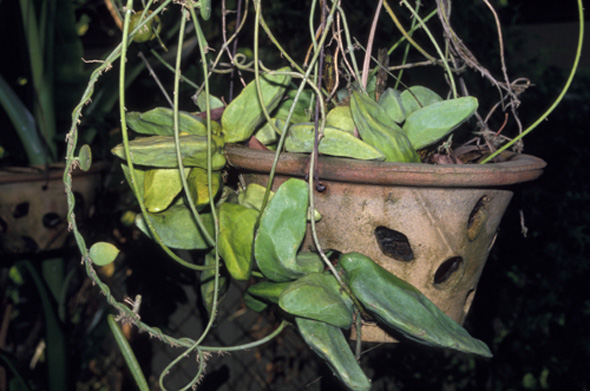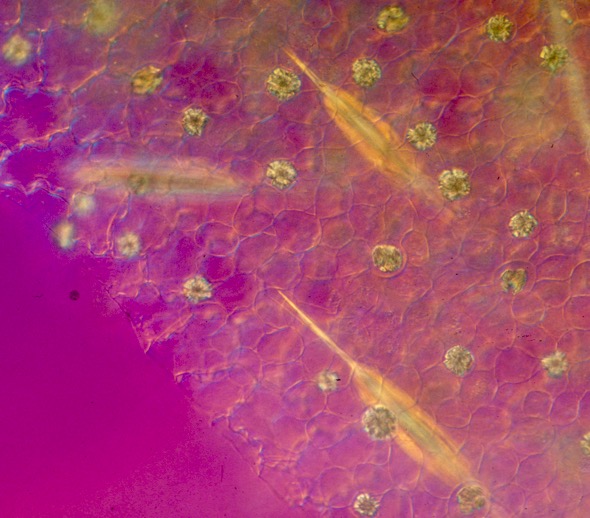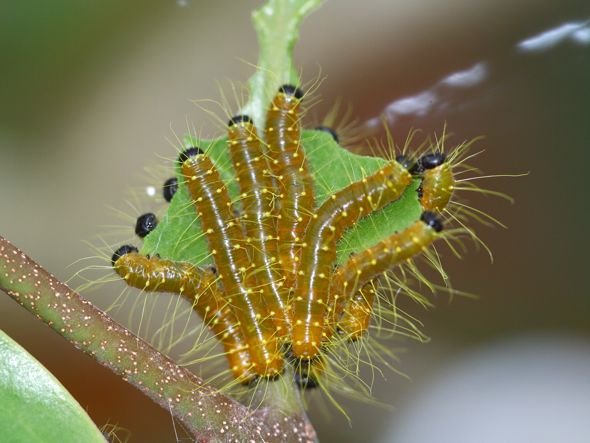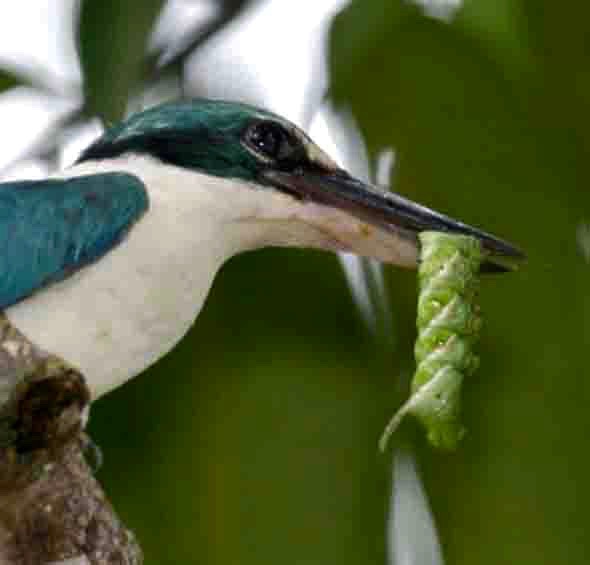Caterpillars, beetles and grasshoppers are some of the insects that depend on leaves to survive. While limited grazing poses no threat to the plants, excessive grazing that results in defoliation can have serious consequences.
So what do plants do to defend themselves?
Physical defense is one method. This includes developing thick cell walls, waxy layers, thorns, spines and bark.
Harbouring ants that attack herbivores is another. An example is the Common Mahang (Macaranga bancana) where the ants live in the hollows of young shoots. Another ant plant is Dischidia major (below).

There are also indirect defenses. These come in the form of chemicals like tannins and alkaloids that make the leaves less palatable. The presence of calcium oxalate crystals in the leaf tissues also helps LINK (below).

Some plants produce cyanogenic glycosides (as in tapioca or Manihot esculenta) that liberate cyanide when the tissues are damaged LINK.
Another form of indirect defense is the presence of volatile organic compounds in the tissues that are released when the leaves are attacked. This in turn attracts the attention of the herbivores’ natural enemies like parasitoids and birds that feed on the caterpillars for instance. Originally thought the predator-herbivore interaction to benefit only the former, it is now believed to be actually mutualistic PDF.

When caterpillars (above) or other herbivores feed on leaves along a branch, a physical (leaf quality) and/or chemical response is triggered. The surrounding intact leaves and sometimes even the other leaves as well, respond within hours or days allowing predators and parasitoids to sense the caterpillar-damaged trees from a distance well before they are able to see or smell the herbivores. In this way the birds as well as the parasitoids can reduce the herbivore damage to the plants (below).

Now how do predators detect herbivore-damaged plants? Sight and smell play a major role here. After all, birds see a large scale of colour variations and thus with more shades than humans. Also, birds are able to see the ultraviolet component of light that we are not able to see.
Long thought to be negligible, recent studies have shown that birds can detect smells much better than previously thought. So it is possible that birds may use their sense of smell to detect chemical signals from plants.
YC Wee
Singapore
11th July 2017
References:
1. Freeman, BC & GA Beattie, 2008. An overview of plant defenses against pathogens and herbivores. The Plant Health Instructor, DOI: 10.1094/PHI-I-2008-0226-01 LINK.
2. Mäntylä, Elina, 2008. Mutulistic interactions between plants and birds: Behavioural mechanisms and ecological importance. PhD thesis, PDF.









3 Responses
Most enlightening. Thank you!
You are welcome.
You are most welcome!